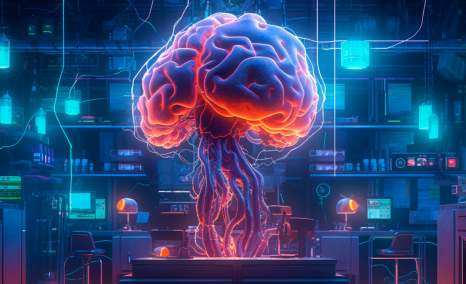Schizophrenia vs Bipolar disorder: Biomarkers to the rescue
Oct 18, 2024
Table of Contents
Schizophrenia and Bipolar Disorder are often challenging to differentiate due to their overlapping symptoms. Schizophrenia is primarily marked by hallucinations and delusions, leading individuals to lose touch with reality. Patients may hear voices or see things that aren’t there, creating a profound sense of detachment from the world around them. This condition is classified as a psychotic disorder, where the mind struggles to discern what is real from what is imagined. In contrast, Bipolar Disorder is characterized by extreme mood swings that can range from deep depression to manic highs. During manic episodes, individuals may experience heightened energy, euphoria, or irritability, while depressive phases bring overwhelming sadness and hopelessness. Though primarily recognized as a mood disorder, bipolar disorder can also involve episodes of psychosis, blurring the lines between these two complex conditions.
While both disorders feature elements of psychosis, their underlying mechanisms and manifestations are distinct. Understanding these differences is crucial for accurate diagnosis and effective treatment, ensuring that individuals receive the care they need to navigate their unique mental health journeys.
Downloads
Click Here To Get the Article in PDF
Recent Articles
- FDA Grants Priority Review to BMS’ Luspatercept; Teva and MedinCell’s Risperidone FDA Approval; B...
- Breaking Boundaries: Innovations and Updates in Schizophrenia Treatment
- FDA Approves Luye’s Rykindo; EU Approves AstraZeneca’s Tezspire; Oramed Announces Trial Results o...
- FDA Approves LUMAKRAS with VECTIBIX for KRAS G12C-Mutated Colorectal Cancer; PYC Receives FDA Rar...
- Vanda Broadens its Reach to Bipolar Disorder Treatment Market With Fanapt Approval
Why is the distinction important?
Understanding the distinction between schizophrenia and bipolar disorder is crucial for accurate diagnosis and effective treatment. While both are serious mental health conditions that can drastically impact a person’s life, they manifest with distinct characteristics, symptoms, and approaches to care. Misdiagnosis between the two can lead to inappropriate treatments that exacerbate symptoms or lead to complications, making early detection vital for ensuring patients receive the right care.
Key Differences Between Schizophrenia and Bipolar Disorder
- Nature of Symptoms
- Bipolar Disorder is characterized by extreme mood swings, including episodes of mania (or hypomania) and depression. During manic episodes, individuals experience euphoria, high energy, risky behaviors, and racing thoughts. In contrast, depressive episodes are marked by deep sadness, hopelessness, and a lack of interest in activities.
- Schizophrenia, on the other hand, is primarily defined by psychotic symptoms such as hallucinations , delusions , disorganized thinking, and negative symptoms like emotional flatness and social withdrawal. These symptoms create a profound disconnect from reality, significantly impacting daily functioning.
- Mood Stability
- In Bipolar Disorder, mood swings are often followed by periods of stability. These intervals, which can last for days, weeks, or even months, allow individuals to function normally without significant mood disturbances.
- For those with schizophrenia, symptoms tend to persist and continuously interfere with daily life. While periods of remission may occur, ongoing management of the condition is generally required due to its chronic nature.
- Psychotic Features
- Bipolar Disorder may involve psychotic symptoms like hallucinations or delusions during severe episodes of mania or depression. However, these psychotic features are typically tied to the individual’s mood state and are not always present.
- Schizophrenia is defined by psychotic symptoms that can occur independently of mood fluctuations. These symptoms are central to the diagnosis and persist even outside of mood episodes.
Genetic and Biological Overlap
Research has revealed that schizophrenia and bipolar disorder share genetic underpinnings. Studies show that certain genetic mutations associated with schizophrenia are also found in individuals experiencing mania. Developmental risk factors and overlapping gene loci, including three major gene regions of interest, further suggest a shared genetic history. Despite this genetic overlap, important biological distinctions exist between the two disorders. For example, MRI scans show differences in gray matter volume, cortical and subcortical regions, the insula, and the thalamus between schizophrenia and bipolar disorder patients.
These biological differences contribute to the diagnostic challenges clinicians face, with some studies presenting contradictory results. Misdiagnosis remains a significant issue, underscoring the importance of early and accurate diagnosis for ensuring effective treatment.
Importance of Accurate Diagnosis
Diagnosing schizophrenia or bipolar disorder accurately is essential for several reasons:
- Treatment Approaches: Treatment for bipolar disorder often involves mood stabilizers and psychotherapy, while schizophrenia typically requires antipsychotic medications in combination with supportive therapies. Misdiagnosis can lead to ineffective treatment regimens, potentially worsening the patient’s condition.
- Prognosis and Management: Determining whether a patient has schizophrenia or bipolar disorder affects their long-term prognosis and the type of care they need. Bipolar disorder is generally more manageable with appropriate treatment, while schizophrenia often demands more intensive intervention and support.
- Impact on Daily Life: Both disorders disrupt daily functioning but in different ways. Individuals with bipolar disorder may struggle with relationships due to mood swings, whereas those with schizophrenia face challenges related to reality perception and social interactions due to their psychotic symptoms.
The Role of Biomarkers
Biomarkers are emerging as a vital tool in identifying the risk of schizophrenia, predicting its progression, and aiding in diagnosis and treatment. These markers, whether molecular (like DNA or proteins) or macroscopic (such as brain imaging), provide clinicians with deeper insights into the disorder’s onset and trajectory. This enables more targeted approaches to treatment, optimizing the use of schizophrenia medications.
One promising area of biomarker research involves neuroimaging, which can capture phenotypic variations in brain circuits, as well as molecular and cellular disease targets. Potential biomarkers identified through neuroimaging include dopamine hyperactivity, hippocampal hyperactivity, and cortical gray matter volume loss. These biomarkers could help clinicians tailor specific medications for schizophrenia based on individual brain changes. Another marker, the auditory steady-state response (ASSR), has been explored for its role in auditory processing, showing potential as an indicator for schizophrenia and other psychiatric conditions.
On a molecular level, nutrient deficiencies, such as low Vitamin B6 levels, have been associated with a higher risk of schizophrenia. Additionally, elevated levels of the G72 protein have been found in those with the disorder, making it a key biomarker to monitor. Peripheral epigenetic markers, including DNA methylation and miRNA expression patterns, also reveal significant differences between individuals with schizophrenia and healthy controls. Furthermore, increased inflammatory markers in maternal blood during pregnancy have been linked to a heightened risk of developing schizophrenia, highlighting the complex interplay between genetic and environmental factors in the condition.
Adding to this growing body of research, a study published in the Journal of Psychiatric Research shed light on the role of blood serum metabolomics in distinguishing between different psychiatric disorders, including schizophrenia and bipolar disorder. In this study, blood serum samples from 54 schizophrenia patients, 68 bipolar disorder patients, and 60 healthy volunteers were analyzed using proton nuclear magnetic resonance (NMR) spectroscopy. The results showed distinct chemical differences between the two disorders, further demonstrating the potential of biomarkers to enhance the accuracy of psychiatric diagnoses.
However, the study also faced limitations, such as a small patient pool, variations in ethnicity, and differences in medications among participants. These factors could have influenced the findings, underscoring the need for further research to validate and expand upon these results.
As advancements in biomarker research continue, the future of schizophrenia treatment looks promising. These biomarkers could help clinicians predict which schizophrenia medications will be most effective for individual patients, leading to more personalized and effective treatment strategies. With ongoing research into novel therapies targeting neuroplasticity and inflammation, the integration of biomarkers into schizophrenia care could revolutionize the field, transforming both diagnostic approaches and treatment outcomes.

Downloads
Article in PDF
Recent Articles
- Diagnostic Precision: The Rise of Medical Imaging Technologies and Market Trends
- Plotting the Extensive Demand of Mobile Apps for Mental Health
- Vanda Broadens its Reach to Bipolar Disorder Treatment Market With Fanapt Approval
- Acquisition of Stemline; Roche’s Elecsys Anti-SARS-CoV-2 antibody test; Newron’s abandonment of S...
- BI & Duke Clinical Research Institute have expansion; BioInvent Inks Mfg. Pact; Elite Pharma...



